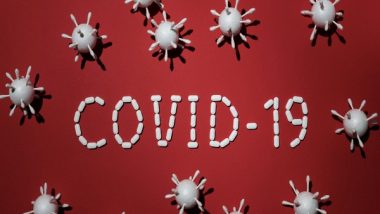Washington [US], November 16 (ANI): A novel nasal vaccination method has been created by researchers from the Centenary Institute and the University of Sydney that promotes strong lung immunity and protection against the SARS-CoV-2 coronavirus.
The study was published in the prestigious journal Nature Communications.
Also Read | Aditya Roy Kapur Birthday: 7 Droolworthy Pictures of the Bollywood Hunk That Deserve All Your Attention!.
The new vaccine approach has been tested successfully in mice and has the potential to be a powerful tool for enhancing protection against COVID-19 infection and minimising ongoing viral spread.
Made up of the SARS-CoV-2 spike protein and an adjuvant called Pam2Cys (a molecule that helps stimulate a stronger immune response in the body), that was developed by Professor Richard Payne, NHMRC Investigator in the University of Sydney's Faculty of Science, the new vaccine was delivered via simply breathing in through the nose. It prompted substantial levels of neutralising antibodies and increased T-cell responses in the lungs and airways of the mice that were tested.
Also Read | Youngsters Who Believe They Come From Poorer Backgrounds More Likely To Have Low Self-Esteem, Says Study.
Lead author of the study, Dr Anneliese Ashhurst, research fellow in the University of Sydney's Faculty of Medicine and Health and the Centenary Institute said that while current COVID-19 vaccines are critical, there were some limitations, including the waning of immunity post-vaccination and infection, combined with the impact of new viral variants evolving.
"Current vaccines against SARS-CoV-2 substantially reduce mortality and severe disease, but protection against infection is less effective. Vaccinated individuals are still catching COVID-19 and can spread the infection, so breakthrough infections are still occurring," said Dr Ashhurst.
"To stop viral spread and to prevent this virus from mutating we need a new vaccine approach that blocks COVID-19 transmission," she said.
In the mice study, the new vaccine was delivered nasally, making its way through the respiratory tract, adhering to the tissues of the nasal cavity, airways and lungs. Testing showed the generation of high levels of protective antibodies in the airways and increased T-cell responses in the lungs (T-cells help destroy SARS-CoV-2 infected cells). Significantly, none of the vaccinated mice became infected with COVID-19.
"Our vaccine differs from most current COVID-19 vaccines in that it enables generation of an immune response directly in those areas of the body that are likely to be the first point of contact for the virus - the nose, airway and lungs. This may help explain the vaccine's effectiveness," said Dr Ashhurst.
Senior study author, Professor Emeritus Warwick Britton AO, Head of the Centenary Institute's Tuberculosis Research Program, said that the new vaccine strategy could play a key role in the fight against many diseases.
"Our vaccination findings have shown exciting potential in pre-clinical studies, improving protection against SARS-CoV-2 infection. The approach developed here could help break the COVID-19 infection cycle and will likely influence future coronavirus vaccine related studies," Professor Britton said.
He added that adapted versions of the new nasal vaccine could also be potentially applied to other viral or bacterial respiratory diseases such as influenza, avian flu, SARS and MERS. (ANI)
(This is an unedited and auto-generated story from Syndicated News feed, LatestLY Staff may not have modified or edited the content body)













 Quickly
Quickly
















